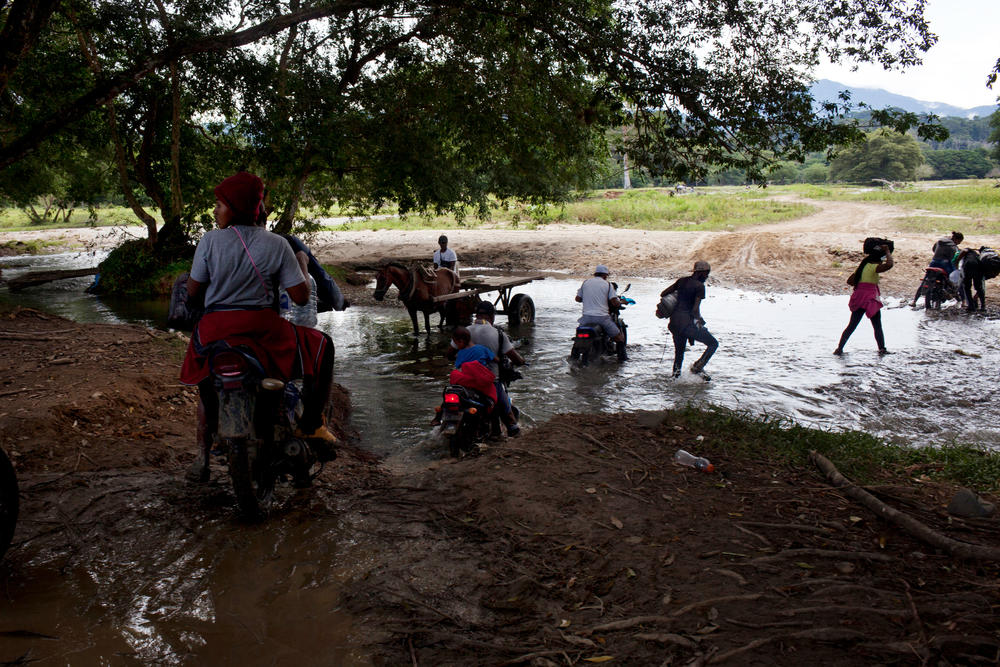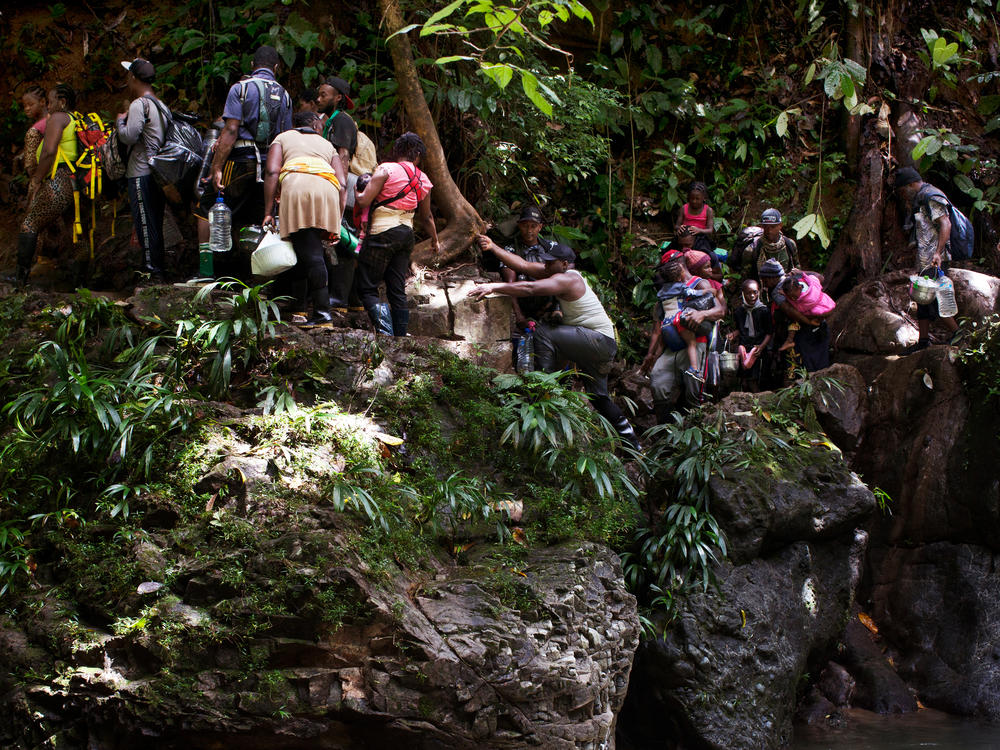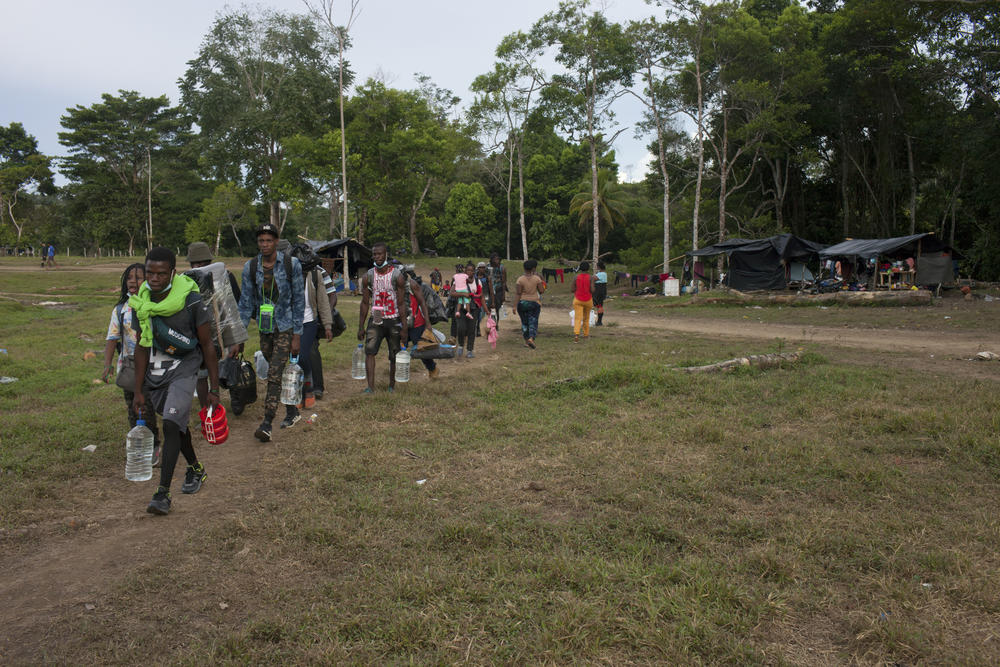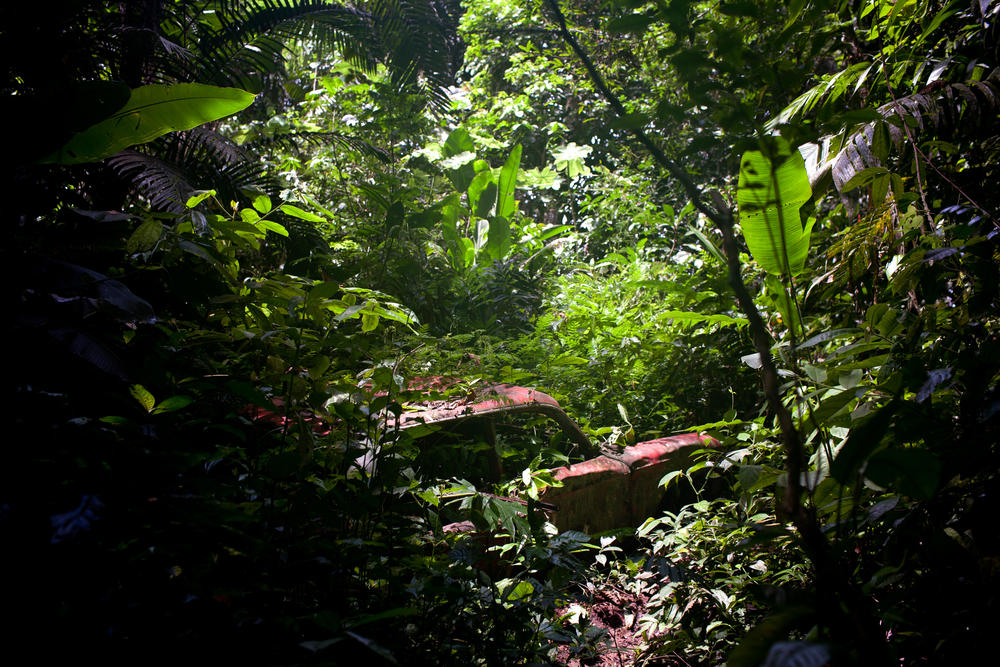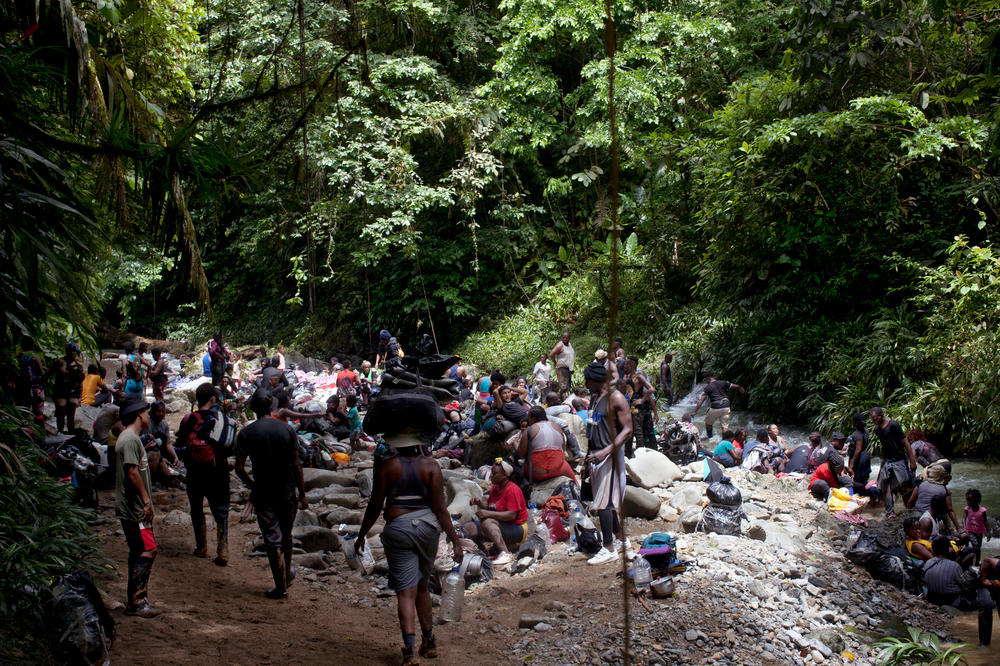Section Branding
Header Content
A once-remote patch of rainforest is now packed with migrants trying to reach the U.S.
Primary Content
DARIEN JUNGLE, Colombia – For centuries, jungle-covered mountains, swamps and poisonous snakes scared people away from the Darién Gap, the dense rainforest separating North and South America. It's still the only spot where the Pan-American Highway, that runs from Alaska all the way to the tip of South America, dissolves into mud.
But thanks to the large numbers of migrants trying to get to the United States, the Darién Gap is no longer a no man's land.
In fact, when NPR first reached the region in September, birds singing and monkeys howling could not be heard. The main sound came from dozens of motorcycles. The passengers sitting on the back were migrants from Haiti, Venezuela, Cuba, India and African countries. But because they lacked U.S. visas, they had to travel overland, first through South and Central America and then Mexico.
The hardest part is crossing the roadless, 60-mile-wide Darién Gap. To cover the first few miles, migrants can pay to ride on the back of motorcycles that navigate muddy trails. But soon the jungle thickens, and they must start walking.
"It's really difficult," says Gegrand Joseph, 44, a Haitian who had hiked across the Darién Gap five years ago, was deported by the Trump administration and is tackling this patch of jungle a second time to get back to the U.S. "But there is no alternative."
Heavy foot traffic through the rainforest
On foot it will take a week to reach the first village on the Panamanian side. The migrants carry overstuffed backpacks, babies, cooking pots and jugs of water. Yet they seem undaunted. To gain traction on a steep, muddy hillside, they crawl on their hands and knees. As progress slows, the migrants form a human traffic jam.
So far this year more than 100,000 migrants have walked across the Darién Gap, more than triple the previous annual record, according to the International Organization for Migration. Many had been working in South America but lost their jobs during the coronavirus pandemic and figured that, under the Biden administration, they would have a better chance of getting into the U.S.
That's a lot of traffic for a jungle famous for stopping it.
Although Spanish explorers conquered most of Latin America, they shied away from the Darién jungle, which they viewed as a heart of darkness rife with yellow fever and malaria. More recently efforts by the U.S and Latin American governments to pave a road through the region and complete the 19,000-mile Pan-American Highway fell apart amid fears of massive deforestation and the presence of guerrillas and drug traffickers on the Colombian side.
Some motorists have tried as well
Still, a few motorists have bridged the gap. In 1962, an expedition sponsored by a Chicago car dealer and equipped with machetes, winches and chainsaws tried to drive three Chevrolet Corvairs from the Panamanian side to Colombia.
In a promotional film, the narrator notes that "every mile of progress must be fought for, foot by foot, inch by inch. Again, the caravan must fight its way through the dark and narrow tunnels of the stubborn Darien."
One of the Corvairs got stuck and its chassis can still be seen rusting in the jungle enveloped by trees and vines. But two of the cars made it all the way to Colombia.
In 1972 a team supported by the British army hauled two Range Rovers through the Darién Gap. On some days, the trucks covered just a few hundred yards and it took them 99 days to get through.
Narco, jungle edition
But the wilderness is being slowly whittled away. On the Colombian side of the border, I come across a bulldozer carving a road through the jungle. It's illegal but there are no police in sight. The area is controlled by a drug cartel called the Gulf Clan, which also makes a lot of money off the migrants.
At a jungle campground the Gulf Clan charges $50 per migrant to stay for just one night. In the evening, cartel members can be heard barking orders to locally hired workers who respond like obedient soldiers.
All the traffic leaves an environmental toll
The next day, some 700 migrants break camp and hit the jungle trails on foot, leaving behind plastic bottles, empty food tins and dirty diapers. The migrants relieve themselves in the rivers and toss camping gear and clothes into the water.
That's to lighten their loads, says Justin LeFleuris, a Haitian migrant heading for the U.S. As he speaks, a desperate woman digs three pairs of jeans out of her backpack and tosses them into a river.
Photographer Carlos Villalón, who is on assignment for NPR and has spent years reporting on the Darién Gap, is shocked by how it's changed. Two national parks in the Darién are UNESCO World Heritage sites and the region is home to Indigenous communities such as the Kuna, Wounaan and Embera, as well as numerous endangered species, like the brown-headed spider monkey.
"It's sad," Villalón says of all the garbage. "You cannot drink water from the river. Two years ago I was drinking water on this same river you know. This is not a pristine jungle anymore."
The dangers are numerous
But Claudio Madaune of the Darién Foundation, a Colombian conservation group, says that the pollution caused by the migrants is negligible compared to damage caused by illegal ranchers and gold miners who have moved into the area.
He says the worst change is that the Darién has become far more dangerous. Gunmen frequently rob, rape and kill migrants. Government officials from Panama and Colombia have discussed setting up a boat service across the Caribbean to transport migrants between the two countries. That would reduce the risks and help protect the rainforest.
Forcing migrants to walk across the Darién Gap "is totally inhuman," Madaune says.
But so far, nothing has happened. Meanwhile, the once-desolate Darién keeps filling up with people.
Copyright 2021 NPR. To see more, visit https://www.npr.org.
